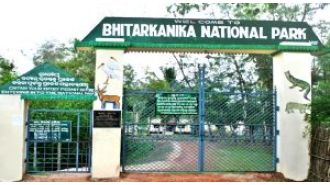A sampling Model For Assessment of Population And regeneration status of different species in Forest Area
Sampling method is most important and crucial steps on assessment of population and regeneration status of any species in forest area. A belt transect method is found to be very much suitable. A transect line is drawn on 1:50000 Toposheet to represent the whole area and geo-coordinate of the same is transferred to ground by using GPS instrument and then enumeration of tree species is done in 5m. width on either side of entire transects line. For shrubs and herbs a sub plots of size 5mx5m at every 200m. distance placed diagonally in the belt transects.
Sampling consists of obtaining information from only a part of a large group or population. Hence, suitable method should be adopted for collection of fi eld data for further statistical analysis. The selection of sampling model is of paramount importantance and most critical because an entire result or outcome of exercise is depends on method adopted in data collection especially in the fi eld of forestry owing to heterogeneity and vast area. Among various sampling methods belt transect is found to be most suitable and convenient for data collection from natural forest.
It is a 10m width belt laid in the fi eld to collect required data. The length of transect line depends on sampling intensity and laid in such a way that, it represents the whole area or true representative of whole population. The transect line may be 1 to 5 depending on vegetation, topography of area to be sampled. For eg. if the area of beat/unit is 1880 Ha. and sampling intensity is 0.5%, then area and length of belt transect is 9.4 Ha. and 9.4 Km respectively. This whole length may be single or two to five transect depending on vegetation, topography, objectives etc. These transects should be distributed uniformly in a whole area so as to represent each category. Meanwhile, care should be taken in selection of transect line that, it should not be nearer to road, watercourse, habitation to avoid border effect.
The instruments used are GPS instrument, Toposheet of scale 1:50000, magnetic compass, rope, measuring tape, paint, geo reference Toposheet and GIS 2.2 version software (if available). The unit area may be beat/compartment to be sampled shall be marked on Toposheet and transect lines will be drawn on after discussion with frontline staff so that these should represent all category of vegetation/forest like evergreen, semi evergreen, moist deciduous, dry deciduous, plantations, mangrove etc., and then geo-coordinates of starting, mid and end point of each transect line to be recorded either directly from Toposheet or using GIS 2.2 version software. Then these co-ordinates transferred to ground with GPS instrument and go to option along with compass. The starting, mid and end point of each transect line marked on nearest tree or rock with help of red paint by giving marking like JNK, T1, SP representing beat name, transect line number and starting point respectively.
The trees having >10cm girth is measured in 5m. width on either side of transect line throughout and recorded in format specified for the tree species along with other information like scientifi c name, family, common name, different girth class, status (continuous/fragmented), threat, plant parts used, trade etc. For shrub, herb species and regeneration studies a separate 5Mx5M sub quadrats plot will be demarcated at every 200m. interval of transect line and placed diagonally and recorded their status in a different proforma specifi ed for shrub and herb species separately (Format 2 & 3).
(Written by Dr. S. Ramesh, for more details, please download the Karnataka Forest Department's, 'My forest' Journal (September - December 2015), from aranya.gov.in)
133 Views






